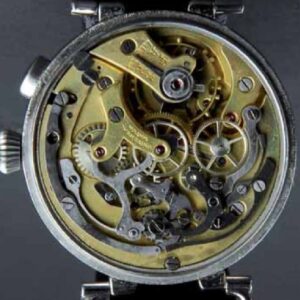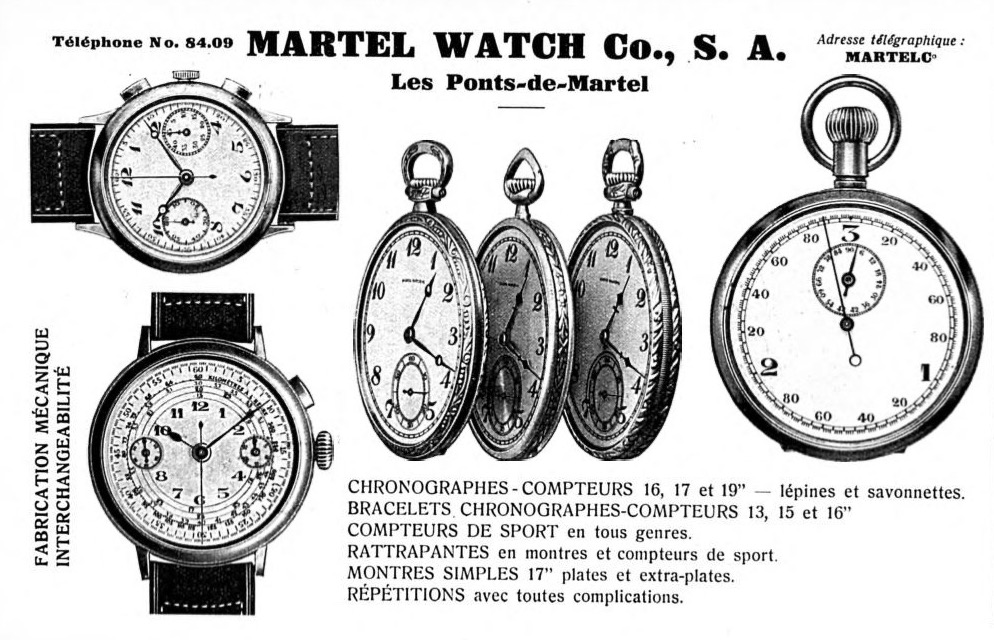 |
Brand: | Universal | 





|
|---|---|---|---|
| Family: | |||
| Height: | |||
| Jewels: | |||
| Reserve: | hours | ||
| Frequency: | |||
| Winding: | Hand winding | ||
| Diameter: | (14.5 ligne) | ||
| Complications: | 6-Column Chronograph, Chronograph, Column Wheel Chronograph, Monopusher Chronograph | ||
| Hands: | 30 Minute Chronograph Hand at 3:00, Central 60 Second Chronograph Hand, Central Hour Hand, Central Minute Hand, Small Seconds Hand at 9:00 | ||
| Distinguishing Technical Characteristics | |||||||||||
|---|---|---|---|---|---|---|---|---|---|---|---|
 Hand-Winding  Counter-Clockwise Balance Cock  Indexed Regulator  6-Column Chronograph |
|||||||||||
| Production: 1932 – 1936 | |||||||||||
| 1910s | 1920s | 1930s | 1940s | 1950s | 1960s | 1970s | 1980s | 1990s | 2000s | 2010s | 2020s |
Universal produced monopusher chronograph wristwatches using four distinct movements: A 15.25”’ movement with a pusher co-axial with the crown at 3:00, a 16.75”’ movement with the pusher at 6:00, a 16”’ movement with the pusher at 2:00, and this 14.5”’ movement with the pusher at 2:00. It is likely that the latter three movements were produced by Martel, since they share some design characteristics with later movements produced by the company. The 14.5, 16, and 16.75 ligne movements all bear a strong resemblance and were likely related designs.
The 14.5 ligne chronograph moves the button from between the lugs at 6:00 to the more-modern 2:00 position on the dial, a design shared with the 16 ligne movement. It likely came later than the other monopushers, in the 1930s, when dual-pusher movements were beginning to appear. A similar movement appears in a 1933 Martel ad.
